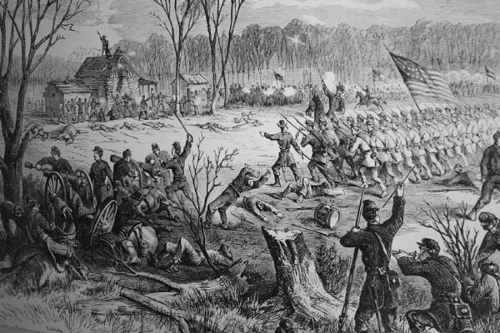
UPPER LAKE, Calif. – Lake County Wine Studio is hosting a wine tasting event featuring wines from Aliénor Cellars with vineyard manager David Weiss, and artist reception with a collection of recent paintings by Peggy McCamant Alexander on Friday, April 6, from 5 p.m. to 8 p.m., and Saturday, April 7, 4 p.m. to 7 p.m.
Musical guests during both evening receptions will be acoustic guitarists Stephen Holland and Travis Rinker.
Born in Texas and raised in Seattle, Margaret (Peggy) McCamant Alexander and her husband, Scott, moved to the Napa Valley from Hawaii in 1983 and then to Hidden Valley Lake in 1998.
She was a reporter, section editor and contributing columnist for the Napa Valley Register and later worked in hospitality and e-commerce management for Napa Valley wineries.
Alexander has been interested in art all her life, since taking children's painting classes at the Frye Museum in Seattle. She received her BFA degree in painting from the University of Washington, where she studied with John Thomas, Richard Kehl, Jacob Lawrence, Dale Chihuly and John Anderson.
This show represents a major departure for Alexander, who has shown her work nationally and internationally.
Unlike the works for which she is known – finely detailed and meticulously mapped pencil and silverpoint drawings featuring multiple images and fine diagonal lines that one reviewer called "rain strokes" – these pieces are acrylic on canvas, loosely painted, semi-impressionistic, boldly colored and highly emotional.
A more important difference is found in the subject matter: the paintings, a series of stylized self-portraits, represent the artist's personal reaction to ALS, or Lou Gehrig's disease.
Alexander was diagnosed in October 2010 with amyotrophic lateral sclerosis, a neurological disorder that affects motor nerves and muscles, eventually resulting in complete loss of function. It is progressive. It is degenerative. It is fatal. There is no cure.
"When my diagnosis was confirmed," said Alexander," and after I did some serious freaking out, I began to paint, working on a series of self-portraits about my relationship with ALS. As my strength and coordination failed I continued to paint, adapting my technique to the disease's progression. Now, even though my right arm is immobile, my left barely works and I am confined to a wheelchair, I still paint, constantly searching for new approaches and new methodology. It is a way of proving to myself that while I may have ALS, it does not have me."
Because her range of arm motion is limited, said Alexander, the paintings are rather small. "When my dominant right hand weakened, I began painting with my left; when my left hand weakened, I tucked brushes into my arm brace; when both arms became too weak to lift to the easel, I put my canvas flat on the table and began to rely more on surface mixing of color. When I can no longer do that… I'll find something else."
The paintings on view in this exhibit represent two related series. One shows the artist's reactions to ALS in a collection of self-portraits, which serves as a documentation of the disease and its progression plus as a personal catharsis. The second, depictions of things Alexander would like to do and places she would like to go, she calls her "bucket list" series.
Alexander thinks of this exhibit as both a showcase for her visual expression and as an education vehicle for ALS, a disease that affects nearly 6000 Americans per year. "Additionally," she says, "I hope to recognize those who have helped me and other ALS patients so much and that continue the search for a cure; I will donate half of my revenue from art sales to local ALS Association chapter."
Aliénor Wines are crafted from Lake County winegrape fruit by May-Britt and Denis Malbec (Malbec & Malbec).
Denis Malbec was born into his lifelong career in the winemaking business at Latour, France, to a family that had been at Château Latour of Pauillac beginning in 1920 with his grandfather working in the vineyard, and then his own father, who was also born at Latour and worked there beginning in 1947 and served as cellar master from 1969 to 1994.

Malbec studied viticulture and enology in Bordeaux and in Reims, Champagne, and following a number of internships in the wine regions of France, he returned to Château Latour in 1993, and then held the position as Enologist and Cellar Master there from 1994-2000.
May-Britt Malbec is a European Master Sommelier who began her career in wine as a sommelier in her homeland Sweden. In 1992 she won the Prince Henri-Melchior de Polignac award, for best sommelier in the Nordic countries.
David Weiss manages vineyards where the grapes are sourced and is the Lake County representative for Aliénor Wines.
The name Aliénor originates as a tribute to Aliénor of Aquitaine and to the substantive contribution she made to the fine wines of Bordeaux when, eight weeks after the annulment of her first marriage with Louis VII King of France, she married her second husband Henry Plantagenét in 1152, soon crowned Henry II King of England in 1154, and ascended the throne of the Kingdom of England after once being Queen of France.
As Queen of England, Aliénor shared the sustaining traditions of her native Aquitaine by turning vast areas of France, among them the region of Bordeaux, into English territory.
During her reign, grape production and wine export, already an important part of everyday life in Bordeaux, grew to levels unequalled before or since.
The Malbecs believe that Queen Aliénor's remarkable contributions to Bordeaux in the 12th century deserve ongoing and contemporary recognition, which Aliénor Cellars now offer in their wines.
The $12.50 ($10/per person for studio club members) wine sampler with paired appetizers will feature Aliénor 2010 Sauvignon Blanc, 2009 Roseraie, 2009 Syrah and 2008 Grand Vin.
There is no charge to those who wish to view the artwork and meet the artist without partaking of the food and wine. Reservations are not required.
Lake County Wine Studio is both a gallery for display of arts and a tasting room, wine bar and retail shop for the fine wines of Lake County.
Artist’s shows are held on a monthly basis with art and wine receptions held the first Friday and subsequent Saturday of each month.
The gallery is located at 9505 Main Street in Upper Lake. It is open Thursday, Saturday and Sunday from 1 p.m. to 7 p.m., and Friday from 1 p.m. to 8 p.m.
Alexander’s show will run through the month of April.
For more information call Lake County Wine Studio at 707-275-8030.










